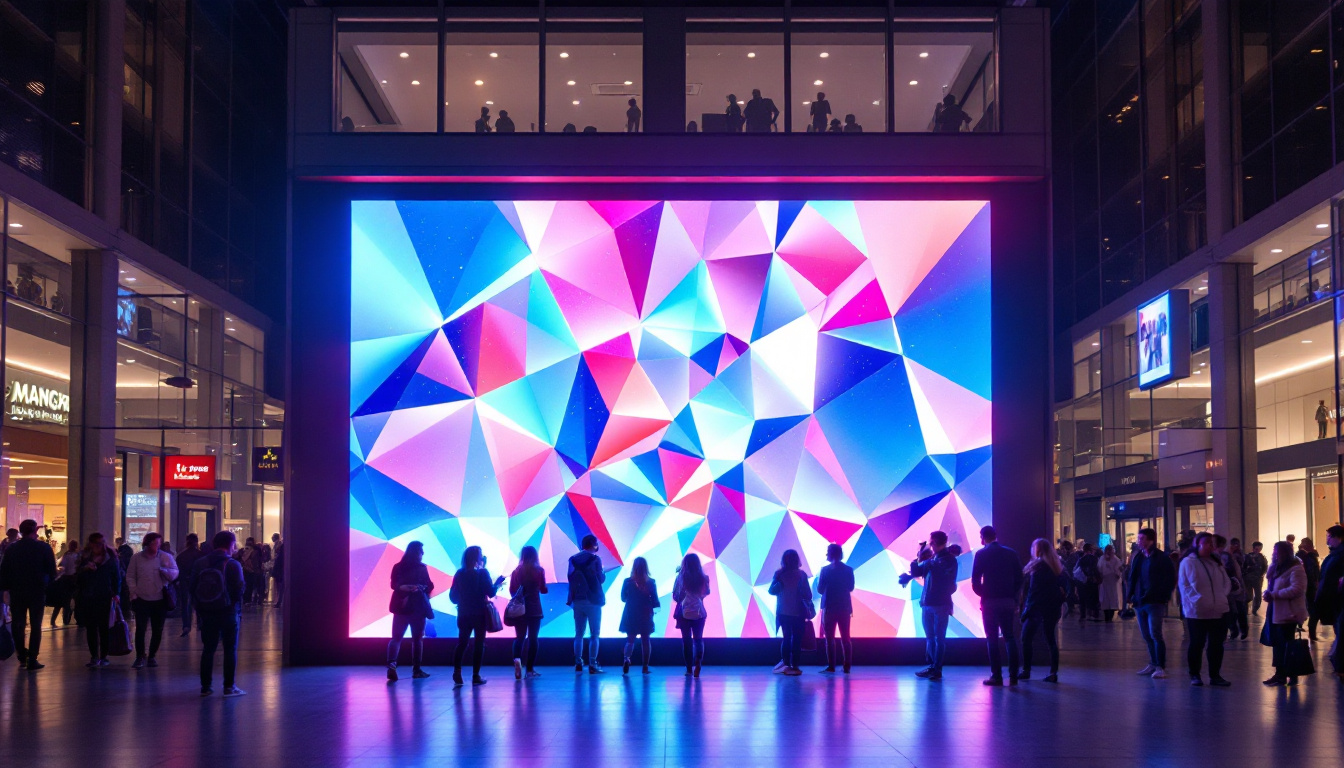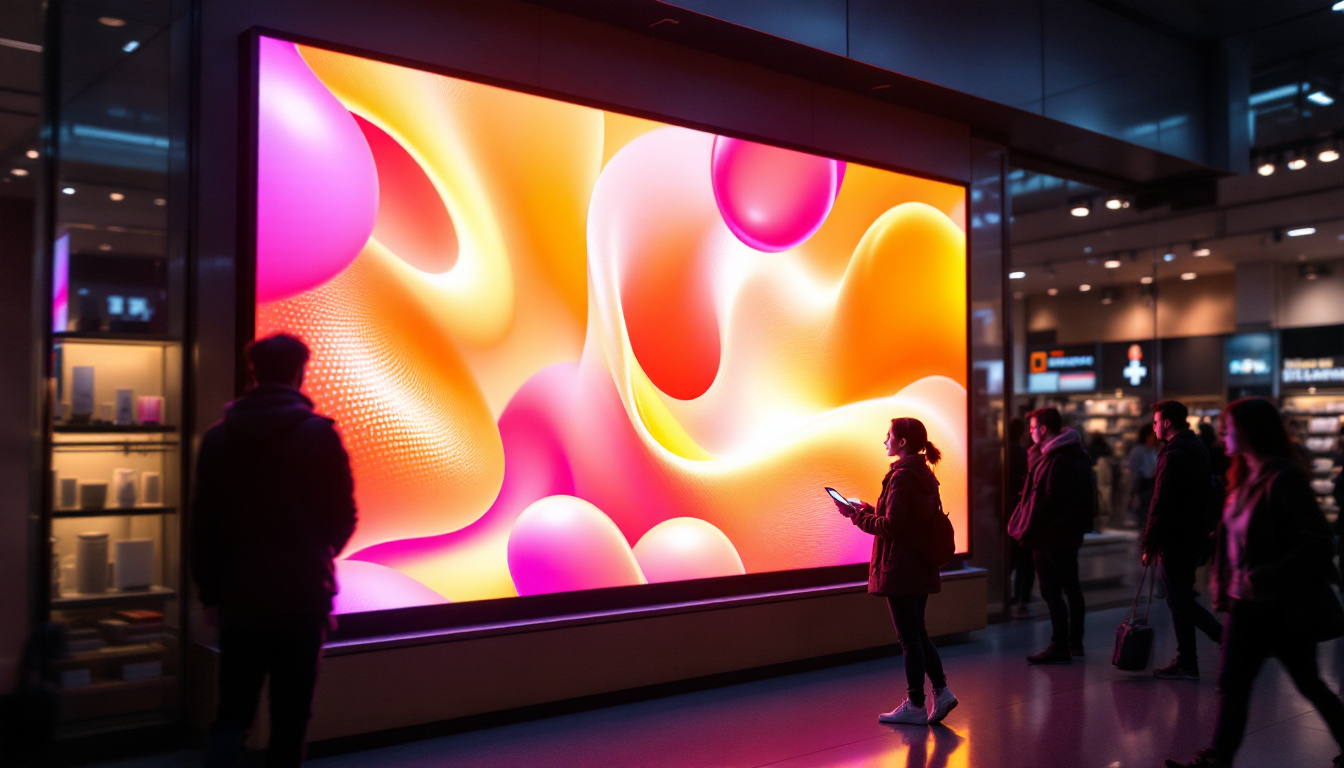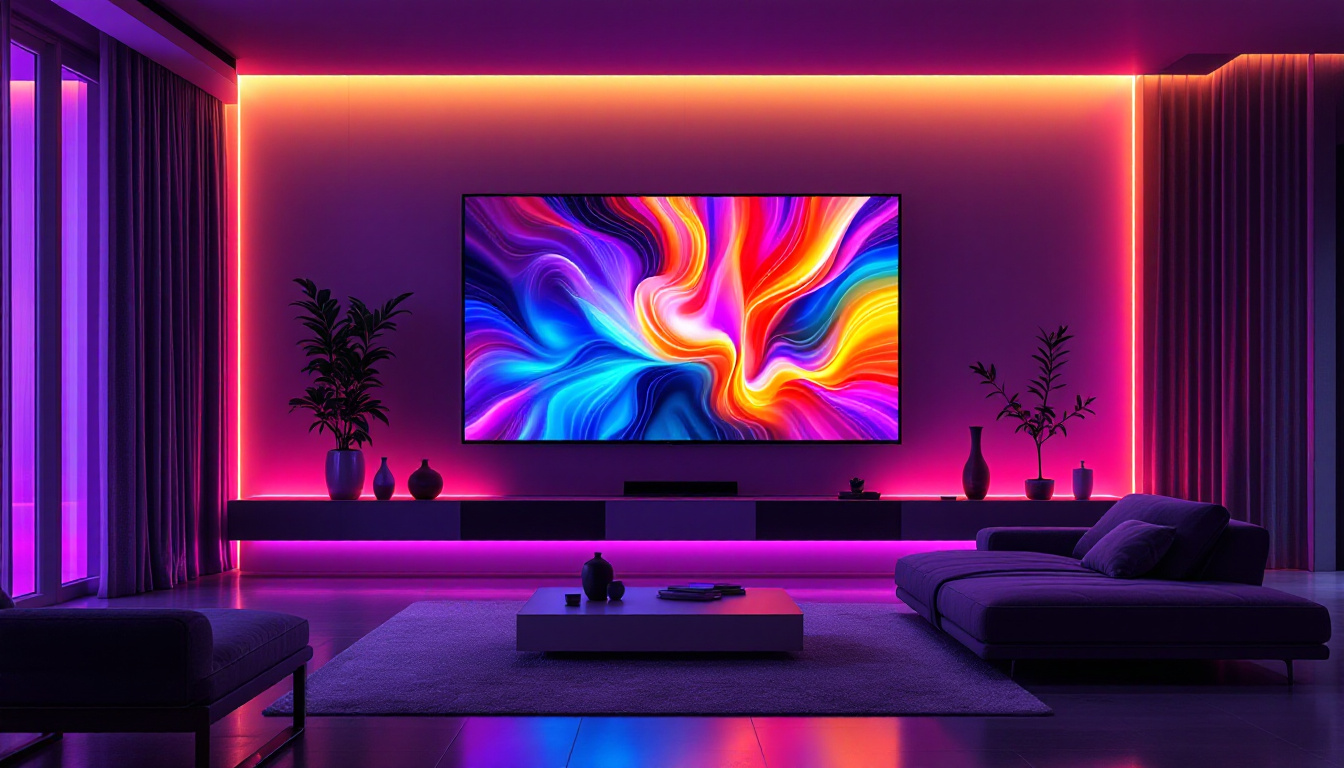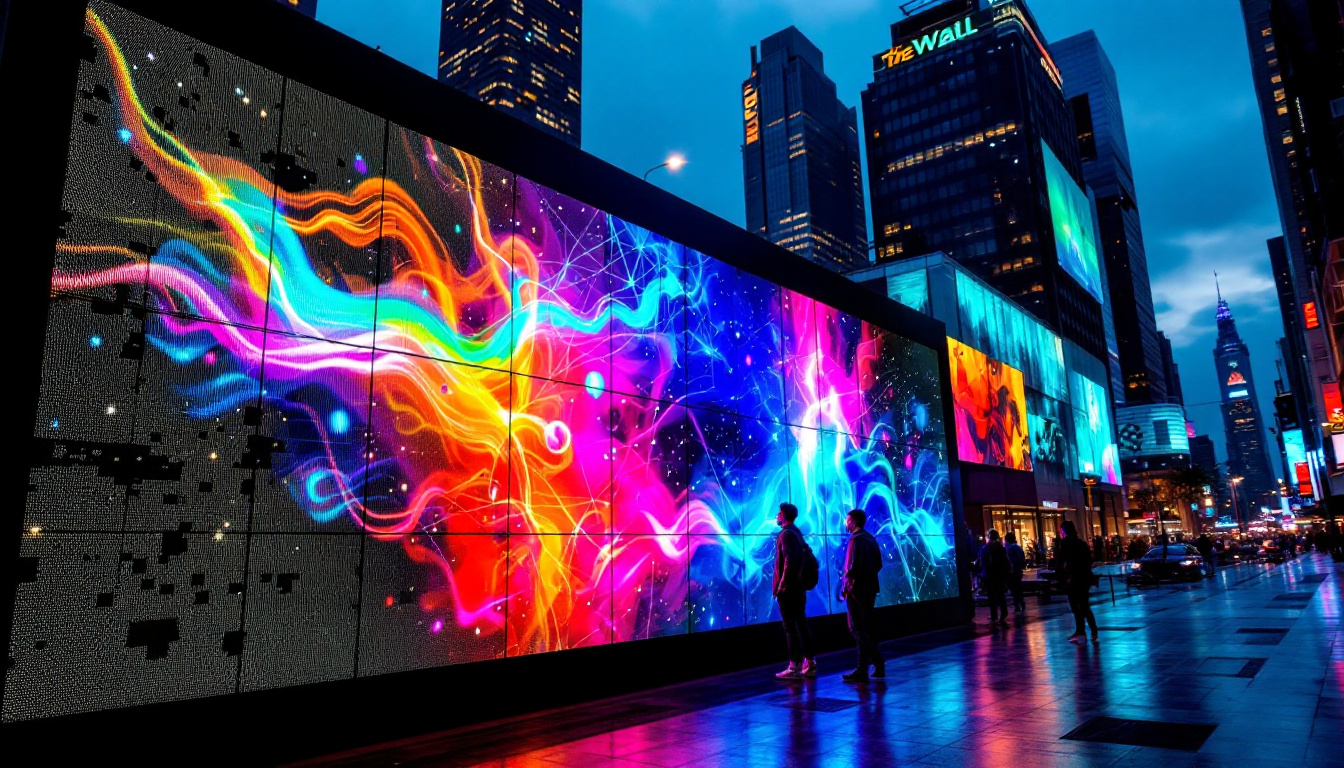In the realm of modern technology, LCD (Liquid Crystal Display) and LED (Light Emitting Diode) displays are ubiquitous, serving as the backbone of countless devices. From televisions to smartphones, these displays have transformed how information is presented and consumed. Understanding the intricacies of LCD coding and LED display technology is essential for developers, engineers, and tech enthusiasts alike.
Understanding LCD Technology
LCD technology relies on liquid crystals to modulate light and create images. Unlike traditional cathode ray tube (CRT) displays, LCDs do not emit light directly. Instead, they use a backlight, typically composed of fluorescent tubes or LEDs, to illuminate the liquid crystals. This section delves into the fundamental components and working principles of LCD technology.
Components of an LCD
An LCD is composed of several key components, each playing a vital role in its functionality. The primary elements include:
- Liquid Crystals: These are the core of the display, capable of changing their alignment when an electric current is applied, thus modulating light.
- Backlight: This provides the necessary illumination for the display, with LED backlighting becoming increasingly popular due to its efficiency and brightness.
- Polarizers: These layers filter light, allowing only certain orientations to pass through, which is crucial for image clarity.
- Glass Substrates: These serve as the structural foundation for the display, housing the liquid crystals and other components.
How LCDs Work
The operation of an LCD is based on the manipulation of light through liquid crystals. When an electric current is applied to the liquid crystals, they change orientation, which alters their ability to block or transmit light. This process is combined with polarizers to create images. The backlight shines through the layers, and the resulting image is displayed on the screen.
LCDs can be further categorized into two main types: passive matrix and active matrix. Passive matrix displays are simpler and less expensive, but they offer lower image quality and slower response times. Active matrix displays, such as those using Thin Film Transistor (TFT) technology, provide better performance and are commonly found in modern devices.
In addition to these basic types, advancements in LCD technology have led to the development of specialized variations, such as In-Plane Switching (IPS) and Vertical Alignment (VA) panels. IPS panels are known for their superior color accuracy and wider viewing angles, making them a popular choice for graphic design and professional photography. On the other hand, VA panels excel in contrast ratios and are often favored for home theater setups, as they deliver deeper blacks and vibrant colors. Each of these technologies enhances the user experience by addressing specific needs and preferences in display performance.
Moreover, the evolution of LCD technology has also seen a shift towards higher resolutions and refresh rates. With the advent of 4K and even 8K displays, users can enjoy incredibly sharp images and smoother motion, which is particularly beneficial for gaming and high-definition video playback. The integration of features like adaptive sync technology further enhances the viewing experience by reducing screen tearing and stuttering, making modern LCDs not only versatile but also highly competitive in the ever-evolving landscape of display technologies.
Exploring LED Technology
LED technology has revolutionized display systems by offering brighter, more energy-efficient solutions compared to traditional lighting methods. LEDs are semiconductor devices that emit light when an electric current passes through them. This section explores the characteristics and advantages of LED displays.
Types of LED Displays
LED displays come in various configurations, each suited for specific applications. The most common types include:
- Direct View LED: These displays consist of individual LED modules that create images by combining red, green, and blue lights. They are often used in large outdoor screens and billboards.
- LED-backlit LCD: This hybrid technology combines the benefits of LCD and LED, where LEDs serve as the backlight for an LCD panel, enhancing brightness and color accuracy.
- Organic LED (OLED): A more advanced form of LED technology, OLED displays use organic compounds to emit light, allowing for thinner screens and better contrast ratios.
Advantages of LED Displays
LED displays offer numerous advantages over traditional display technologies. Some of the key benefits include:
- Energy Efficiency: LEDs consume significantly less power than incandescent or fluorescent lights, making them more environmentally friendly.
- Brightness: LED displays can achieve higher brightness levels, making them suitable for outdoor use and in well-lit environments.
- Longevity: LEDs have a longer lifespan compared to traditional lighting, reducing the need for frequent replacements.
- Color Accuracy: With the ability to produce a wider color gamut, LED displays offer more vibrant and true-to-life colors.
The Intersection of LCD and LED Technologies
While LCD and LED technologies are distinct, they often work in tandem, particularly in modern display systems. Understanding how these technologies intersect can provide insights into their applications and performance.
LED Backlighting in LCDs
One of the most significant advancements in LCD technology is the integration of LED backlighting. This combination enhances the overall performance of LCD displays by improving brightness, contrast, and color reproduction. LED backlit LCDs are now the standard in many devices, offering a balance between the affordability of LCDs and the superior performance of LED technology.
LED backlighting can be implemented in two primary ways: edge-lit and full-array. Edge-lit displays use LEDs positioned along the edges of the screen, allowing for a thinner profile. Full-array displays, on the other hand, have a grid of LEDs behind the entire screen, providing more uniform brightness and better local dimming capabilities.
Applications of LCD and LED Displays
The applications of LCD and LED displays are vast and varied, spanning multiple industries and use cases. From consumer electronics to commercial signage, these technologies have found their niche in numerous fields:
- Consumer Electronics: LCD and LED displays are prevalent in televisions, smartphones, tablets, and computer monitors, offering users high-quality visuals.
- Advertising and Signage: LED displays are widely used in outdoor advertising and digital signage due to their brightness and visibility.
- Automotive Displays: Modern vehicles utilize LCD and LED technology for dashboards, infotainment systems, and navigation displays.
Programming for LCD and LED Displays
For developers and engineers, understanding how to program and control LCD and LED displays is crucial. This section covers the basics of coding for these displays, including libraries, protocols, and common challenges.
Programming Libraries
Various programming libraries are available to facilitate the development of applications for LCD and LED displays. These libraries often abstract the complexities of hardware communication, allowing developers to focus on creating engaging user interfaces. Some popular libraries include:
- Adafruit GFX Library: A versatile library that supports a wide range of LCD and OLED displays, making it easy to create graphics and text.
- LiquidCrystal Library: Specifically designed for controlling character LCDs, this library simplifies the process of displaying text and basic graphics.
- FastLED: A library tailored for controlling LED strips and matrices, offering advanced features for color manipulation and animations.
Communication Protocols
When programming displays, understanding the communication protocols is essential. Common protocols include I2C, SPI, and UART. Each protocol has its advantages and is suited for different applications:
- I2C (Inter-Integrated Circuit): A two-wire protocol that allows multiple devices to communicate with a microcontroller, ideal for low-speed applications.
- SPI (Serial Peripheral Interface): A faster protocol that enables high-speed communication, commonly used for high-resolution displays.
- UART (Universal Asynchronous Receiver-Transmitter): A simple protocol used for serial communication, often found in basic display applications.
Challenges in LCD and LED Display Development
While LCD and LED display technologies offer numerous benefits, developers often encounter challenges during the design and implementation phases. Understanding these challenges can lead to more effective solutions.
Display Calibration
One of the primary challenges in display development is achieving accurate color reproduction. Calibration is essential to ensure that colors are displayed as intended. This process involves adjusting brightness, contrast, and color settings to match a reference standard. Tools and software are available to assist in this process, but it can be time-consuming and requires a keen eye for detail.
Power Management
Power consumption is another critical consideration, especially for portable devices. Developers must implement power-saving techniques to extend battery life while maintaining display performance. Techniques such as dynamic brightness adjustment and sleep modes can help optimize power usage without compromising user experience.
Future Trends in LCD and LED Display Technologies
The landscape of display technology is continually evolving, with innovations emerging regularly. This section explores some of the future trends that are likely to shape the industry.
MicroLED Technology
MicroLED technology is gaining traction as a potential successor to OLED displays. MicroLEDs consist of tiny, individual LEDs that can create images without the need for a backlight. This technology promises improved brightness, contrast, and energy efficiency, making it a compelling option for future displays.
Flexible and Foldable Displays
As consumer demand for portable devices grows, flexible and foldable displays are becoming increasingly popular. These displays utilize advanced materials and technologies that allow them to bend and fold without compromising performance. This innovation opens up new possibilities for device design, enabling more compact and versatile form factors.
Conclusion
LCD and LED display technologies have transformed the way information is presented, offering vibrant visuals and efficient performance across various applications. Understanding the principles behind these technologies, along with their programming and development challenges, is essential for anyone involved in the tech industry. As innovations continue to emerge, the future of display technology promises even more exciting advancements, paving the way for enhanced user experiences and new applications.
Discover Cutting-Edge LED Display Solutions with LumenMatrix
As you’ve explored the dynamic world of LCD and LED display technologies, it’s clear that the future holds incredible potential for innovation and enhanced visual communication. LumenMatrix stands at the forefront of this evolution, offering a diverse range of LED display solutions that bring your content to life. Whether you’re looking to elevate your brand’s presence with an Indoor LED Wall Display, captivate passersby with an Outdoor LED Wall Display, or engage fans with a LED Sports Display, LumenMatrix has the expertise to meet your needs. Embrace the power of advanced LED technology and let LumenMatrix help you create unforgettable visual experiences. Check out LumenMatrix LED Display Solutions today and see how they can transform your visual storytelling.































